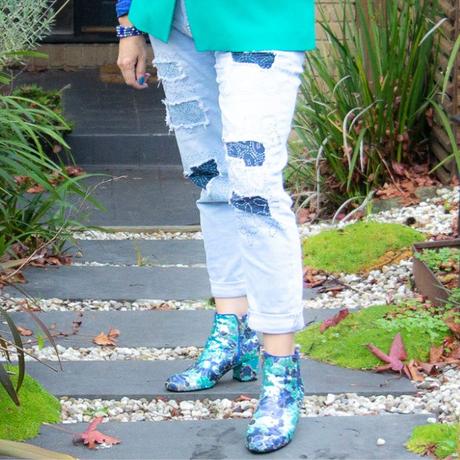



Elevate Your Style with Easy Alterations for a Better Fit and More Comfort
Are you tired of staring at your closet full of clothes that don’t quite fit right? Or do you want to refresh your wardrobe without breaking the bank on new clothes? Look no further! With a few simple alterations, you can transform your existing garments to fit better and look more stylish as well as feeling more comfortable (because good fit makes your clothes feel better on). Here are some of the best and easiest alterations for women’s clothing, including tips on fabric choices and what to avoid unless you’re an experienced seamstress with expert skills.
Remember, that needing alterations is not a sign of failure or that there is anything wrong with your body. Mass manufacturing means that clothes are not designed to fit you, but to just be able to be put on by the maximum number of people. Never feel bad if you try on a garment and it doesn’t fit you, they didn’t take your measurements and design and make that garment to fit you, and women have very different body shapes, proportions and variations and there is no possible way you could make something that looked great on everyone!
1. Hemming
One of the most common alterations that can instantly make your clothes fit better and look neater is hemming. Whether it’s a pair of pants that are too long or a dress that’s too short, hemming can work wonders. Here’s what you need to know:
- Hemming Tip – make sure anything you’re about to hem has been washed before you take it up, sometimes fabrics shrink in first wash so you want to make sure the shrinkage has occurred before you make the alteration.
- Fabrics to Look For: Cotton, denim, and wool are generally easy to hem. Natural fibers tend to hold their shape better and provide a clean finish. Check out my post on how to hem your jeans here.
- What to Avoid: Stretchy and delicate fabrics like silk or chiffon can be tricky to hem without puckering or creating a jagged edge unless you have experience sewing with stretch or delicate fabrics. If you’re not sure leave these to the professionals.
2. Waist Adjustment
Is your favorite pair of jeans a little loose around the waist, or is that beautiful skirt just a tad too tight? A waist adjustment can solve these issues effortlessly.
- Waist Adjustment Tips: You may want to take in from the side seams, or add small darts around the waist to ease in the fabric at multiple points for overall better fit. Jeans can be harder to take in and are often worth taking to a professional. When letting out, make sure there is enough fabric in the seams to do this, or potentially you may need to add in fabric (another one for a professional if you feel that you’re not up to this).
- Fabrics to Look For: Most fabrics can be adjusted at the waist. However, consider the thickness and stiffness of the fabric when making alterations.
- What to Avoid: Extremely thick or stiff fabrics might be difficult to work with, so be cautious with these materials.
3. Sleeve Shortening or Lengthening
Sleeve alterations can make a big difference in the overall look and fit of your clothing. You can transform a long-sleeved blouse into a chic three-quarter sleeve, or vice versa.
- Sleeve Length Tips: Sleeves that are too long make the whole garment appear to large, so getting your sleeve length right makes a big difference to how the whole garment appears to fit. You may need to take up from the shoulder or adjust from the cuff, a shirt with cuff is a more complex alteration (one for the professionals) whilst a long sleeve tee can be an easy one to adjust, even adding a little shirring elastic up the seam at the wrist will pull up a sleeve that’s a little too long and is simple to do at home.
- Fabrics to Look For: This alteration can be applied to a variety of fabrics, but be mindful of the fabric’s elasticity when adjusting sleeve length.
- What to Avoid: Delicate fabrics may require extra care when altering sleeves, as they can easily tear or fray.
4. Tapering and Taking In
If your clothing items feel baggy or lack definition, taking in or tapering can help create a more flattering silhouette. This alteration works well for dresses, tops, and even blazers.
- Taking In Tips: Put on the garment and notice where there is extra fabric. It could be near the armhole or in the mid-back. Put your darts in those places rather than just taking in at side seams which may not make the clothes fit as well as they could. Sometimes taking up from the shoulders can give a dress or top a much better fit. If you’re not sure, take it to a tailor for their expert opinion and skills.
- Fabrics to Look For: Medium-weight fabrics like cotton blends, linen, and wool are generally easier to work with for taking in.
- What to Avoid: Very heavy or bulky fabrics may not yield the desired results when trying to create a tailored look.
5. Buttons and Zipper
Buttons falling off or zippers getting stuck are common clothing annoyances. By fixing these issues, you can extend the life of your favorite garments.
- Button Tips: If you don’t love the buttons for any reason, maybe they stand out because they are an alternate colour to the garment, or you don’t like the style, why not think about replacing them with something that’s more your style. It’s an easy trick that anyone can do at home even without a sewing machine.
- Fabrics to Look For: These repairs are not fabric-dependent, so you can address them on most types of clothing.
- What to Avoid: There’s no specific fabric to avoid here, but delicate fabrics may require extra care to prevent damage during repair.
6. Mending Holes and Tears
Bonus 6th repair you can try is a little Sashiko and Boro, which are the Japanese art of mending. If you’ve got jeans that have torn, or a cashmere sweater that has a hole, why not try these decorative darning techniques that instead of trying to cover them up as if they never happened, that celebrate and actually enhance those holes and make them into a decorative feature.
- Fabrics to Look For: Denim or cotton without too much stretch so your stitches don’t break with wear.
- What to Avoid: Very stretchy fabrics if mending a large hole, small ones are fine.

What I love about thes mending techniques is that you can take a completely generic mass manufactured item and turn it into something completely unique, a one-of-a-kind piece. Plus I do mine by hand, so no sewing machine required!

Altering your clothing to achieve a better fit and a more stylish look doesn’t have to be complicated or costly. With a few basic sewing skills or the help of a professional tailor, you can revamp your wardrobe and breathe new life into your favorite pieces.
When choosing fabrics for alterations, remember that natural fibers tend to be more forgiving and easier to work with, while stretchy or delicate materials may pose challenges. However, don’t be discouraged from experimenting with different fabrics, as each alteration can be a valuable learning experience.
So, go ahead and tackle those hemlines, waistbands, sleeves, and more. With the right alterations, you’ll not only save money but also create a wardrobe that’s uniquely tailored to you, ensuring you always look your best in clothes that fit like a dream
Your Guide to Tailoring and Alterations
The Best Clothing Alterations Based on Your Body Shape
Which are the Easy Alterations
How a Small Alteration Makes a Big Difference
The Magic of Alterations







